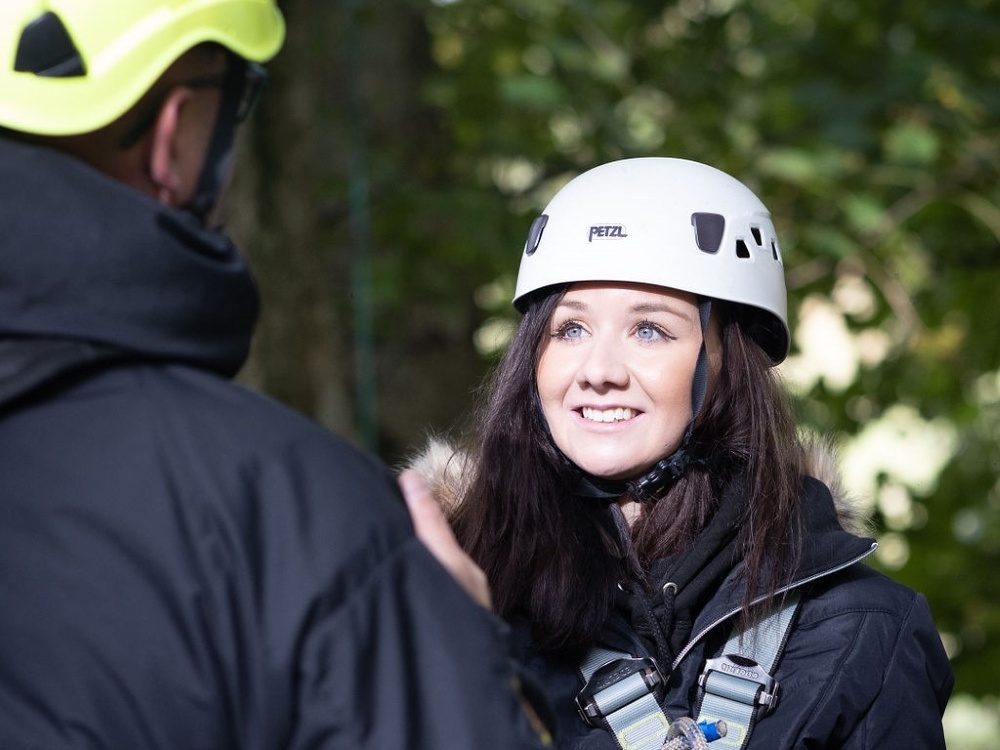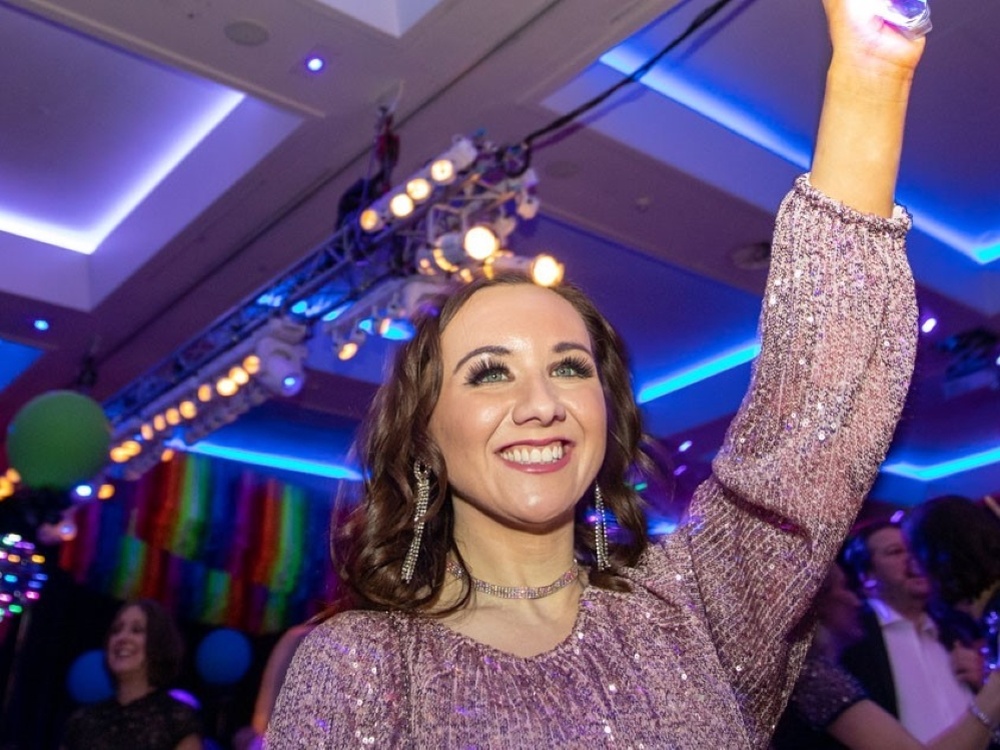In many ways, Amy’s just like any other twenty-something. When she’s not studying for her Master’s degree in Film & TV Production, she loves hanging out with her friends, eating good food, listening to cheesy pop music and watching TV in the comfort of her bedroom. But Amy’s life is also very challenging because she has mitochondrial disease, a very rare genetic disorder.
Early signs and the struggle for diagnosis
As a child, Amy had a low immune system and picked up every cough and cold going. But things took a more serious turn when, at just eight years old, her teacher noticed her eyes weren’t moving together correctly and she was struggling to see the board. What began as a routine eye test turned into a series of bewildering appointments as doctors struggled to explain her symptoms.
Around the same time, she started to experience bad headaches and stomach aches, difficulty walking and a general decline in her health. The biggest change, though, was in her behaviour. In her own words, overnight she turned “from an angelic child into the devil.”
Despite numerous tests over the next two years, the results were inconclusive. Her doctors insisted there was nothing wrong with her and put it down to something behavioural. During that time, Amy was in and out of school a lot; consequently her education was disrupted and her friendship groups dwindled, leaving her isolated and misunderstood. It wasn’t until she underwent a skin and muscle biopsy that she finally received a conclusive diagnosis: mitochondrial disease – something her family had never heard of before.
Coping with a rare disease diagnosis
Receiving a rare disease diagnosis was life-changing. Amy was told there was no cure and she was advised to carry on with life as usual. But her world had been turned upside down. She was terrified. She remembers going for weeks without sleep, afraid that she may never wake up. With this frightening prognosis hanging over her, and nowhere to turn for help, how could she simply get back to normal?
For Amy, one of the worst things about being rare was the isolation. The lack of a support network, the absence of anywhere to turn for advice, and the feeling that she and her family were completely alone. Even googling ‘mitochondrial disease’ only brought up worst-case scenarios and negative stories. No one knew what the future might hold, and that frightened Amy and her whole family.
Finding hope and community
And then in 2019 Amy attended a Patient Information Day co-hosted by UCL Mito Centre and The Lily Foundation, and her life changed forever. Up until this point, she’d never met anyone else with mitochondrial disease, yet here was a room full of people who were living through the same experience, here was someone talking positively about it. For the first time since her diagnosis, Amy felt a sense of belonging and hope for the future.
She recalls coming away from that day smiling. “They were just like me,” she observed of the other people in the room. “It felt really positive and upbeat, and I remember getting a good feeling about it – and that doesn’t happen often! Liz was telling us about future projects. When you’re diagnosed with mitochondrial disease, there isn’t much talk of the future. And the fact that the logo colours were pink and purple swayed me!”
Being rare became about being included, about being understood and feeling reassured. Suddenly Amy had the opportunity to meet fellow mitochondrial disease patients of all ages with their own unique stories, many even positive, and she began to think more positively about her prognosis. Since that first Patient Information Day, the Lily family has become a huge part of Amy’s life. She loves the virtual coffee mornings, where she can meet other people who all have mitochondrial disease in common.
The foundation also helped point her in the right direction for support with her mental health, following the medical issues and traumas she suffered. And she’s even been to the Lily Young Adult Weekend. Despite being a self-confessed homebody who would rather be doing her hair and make-up or watching TV on the sofa, she found herself zip-wiring through trees in the Lake District, and admits she might even do it again one day!
Living one day at a time with mitochondrial disease
What’s the worst thing about being rare? Amy doesn’t hesitate. “The pity looks. Don’t look at me like you feel sorry for me – I’m dealing with this.” She has a very philosophical head on those young shoulders, reflecting that these are simply the cards she’s been dealt, and it’s up to her to play them the best she can. “With mitochondrial disease” she continues, “you just have to take each day as it comes. I know there are going to be some tough times, but there’ll also be some happy times.”
And the best thing? Her experience of mitochondrial disease has taught her not to be judgmental towards others; it’s taught her empathy and understanding and how, through her own struggles, she can help others to feel less alone and come to terms with their own diagnosis.
So, coming back to our original question – what’s it like to be rare? “Oh I don’t know, I think I’m a bit basic!” she laughs. “I don’t really see myself as rare, I just see myself as Amy. I’m one of those people that doesn’t give up, no matter what hurdles are put in my way. The mitochondrial disease is just something that happened to me along the way, it doesn’t define who I am.” Hats off to this brave young lady – we think she’s pretty unique.
There are about 300 million people affected by over 6000 rare diseases around the world. Rare Disease Day on February 28th aims to raise awareness and advocate for better support, research and care for those living with rare conditions.
Are you, or someone you know, living with a rare disease? Head over to our social media channels to share if you’re rare and help spread the word.



